Moisture Dry-Out Capability of Steel-Faced Mineral Wool Insulated Sandwich Panels
Abstract
1. Introduction
2. Materials and Methods
2.1. Studied Sandwich Panels
2.2. Laboratory Test
2.3. HAM Modelling
2.3.1. Material Properties
2.3.2. Climate Data and Boundary Conditions
2.3.3. Simulation Model
2.3.4. Time of Wetness
3. Results
3.1. Laboratory Test Results
3.2. Simulation Results
3.3. Critical Rain Amount and Moisture Safety Measures
- A moisture management plan should be prepared considering the limited dry-out rate up to 2 g/day (without tapes, in favourable conditions) through a 30-mm-wide and 3-m-long joint.
- The moisture management plan should also consider that the panels must not equalise to ambient air conditions if ambient RH > 80%. A protective film on the exposed sides of the insulating core must be in place from the factory if such conditions or rain might occur. The film should be removed before the installation of the panels.
- If ambient RH > 80% during storage and installation, then vapour-permeable tapes must be used to cover the outer joints.
- A moisture safety officer should be on site during the installation of the panels.
- Moisture inspection rounds must be carried out regularly.
- Spot measurements of humidity in the panels are recommended.
- In the case of water ingress, all free water must be immediately removed from the structure and t&RH sensors must be installed where the leakage occurred.
- ○
- If RH > 80% inside the panel, then aided drying is necessary and outer joints must not be covered with vapour-retarding tapes.
- Non-conformances in relation to the moisture safety plan must be documented.
4. Discussion
5. Conclusions
Author Contributions
Funding
Conflicts of Interest
References
- Khan, T.; Acar, V.; Aydin, M.R.; Hülagü, B.; Akbulut, H.; Seydibeyoğlu, M.Ö. A review on recent advances in sandwich structures based on polyurethane foam cores. Polym. Compos. 2020, 41, 2355–2400. [Google Scholar] [CrossRef]
- Davies, J.M. Lightweight Sandwich Construction; Davies, J.M., Ed.; Blackwell Science Ltd.: Oxford, UK, 2008; ISBN 9780470690253. [Google Scholar]
- Hill, C.; Norton, A.; Dibdiakova, J. A comparison of the environmental impacts of different categories of insulation materials. Energy Build. 2018, 162, 12–20. [Google Scholar] [CrossRef]
- Llantoy, N.; Chàfer, M.; Cabeza, L.F. A comparative life cycle assessment (LCA) of different insulation materials for buildings in the continental Mediterranean climate. Energy Build. 2020, 225, 110323. [Google Scholar] [CrossRef]
- Peris Mora, E. Life cycle, sustainability and the transcendent quality of building materials. Build. Environ. 2007, 42, 1329–1334. [Google Scholar] [CrossRef]
- Spitzner, M.H.; Koschade, R.; Cammerer, J. Entwicklung eines Sandwichelements mit Energie-Akkumulation, Energieverteilung und Dämmung (SEA). In FIW München Geschäfts-und Tätigkeitsbericht 2010; Forschungsinstitut für Wärmeschutz e.V. München: Gräfelfing, Germany, 2010. [Google Scholar]
- Pihelo, P.; Lelumees, M.; Kalamees, T. Influence of Moisture Dry-out on Hygrothermal Performance of Prefabricated Modular Renovation Elements. Energy Procedia 2016, 96, 745–755. [Google Scholar] [CrossRef]
- Kukk, V.; Külaots, A.; Kers, J.; Kalamees, T. Influence of interior layer properties to moisture dry-out of CLT walls. Can. J. Civ. Eng. 2019, 46, 1001–1009. [Google Scholar] [CrossRef]
- Pihelo, P.; Kalamees, T. Commissioning of moisture safety of nZEB renovation with prefabricated timber frame insulation wall elements. Wood Mater. Sci. Eng. 2019, 1–8. [Google Scholar] [CrossRef]
- EU 305/2011 Regulation of the European Parliament and the Council laying down harmonised conditions for the marketing of construction products and repealing Council Directive 89/106/EEC. Off. J. Eur. Union 2011, 54, 5–43. [CrossRef]
- Mjörnell, K.; Arfvidsson, J.; Sikander, E. A Method for Including Moisture Safety in the Building Process. Indoor Built Environ. 2012, 21, 583–594. [Google Scholar] [CrossRef]
- Olsson, P.; Tjäder, E. Suggestions for adjustment of ByggaF to improve the current use and suit the process of renovation. Energy Procedia 2017, 132, 921–926. [Google Scholar] [CrossRef]
- Pfeiffer, L. Durability Assessment of Sandwich Panel Construction. Ph.D. Thesis, University of Surrey, Guildford, UK, 2005. [Google Scholar]
- Ivanič, A.; Kravanja, G.; Kidess, W.; Rudolf, R.; Lubej, S. The Influences of Moisture on the Mechanical, Morphological and Thermogravimetric Properties of Mineral Wool Made from Basalt Glass Fibers. Materials 2020, 13, 2392. [Google Scholar] [CrossRef] [PubMed]
- EN 13523-26:2014—Coil Coated Metals—Test Methods—Part 26: Resistance to Condensation of Water; Technical Committee CEN/TC 139 “Paints and varnishes”; National Standards Authority of Ireland: Dublin, Ireland, 2014.
- Karamanos, A.; Hadiarakou, S.; Papadopoulos, A.M. The impact of temperature and moisture on the thermal performance of stone wool. Energy Build. 2008, 40, 1402–1411. [Google Scholar] [CrossRef]
- Jerman, M.; Černý, R. Effect of moisture content on heat and moisture transport and storage properties of thermal insulation materials. Energy Build. 2012, 53, 39–46. [Google Scholar] [CrossRef]
- Laukkarinen, A.; Vinha, J.; Kalbe, K.; Kesti, J.; Kalamees, T.; Honkakoski, E. Laboratory tests and modelling of mineral wool insulated steel sandwich panels. E3S Web Conf. 2020, 172, 17006. [Google Scholar] [CrossRef]
- Greenspan, L. Humidity fixed points of binary saturated aqueous solutions. J. Res. Natl. Bur. Stand. 1977, 81, 89–96. [Google Scholar] [CrossRef]
- Nicolai, A.; Grunewald, J.; Zhang, J.J. Recent improvements in HAM simulation tools: Delphin 5/CHAMPS-BES. In Proceedings of the 12th Symposium for Building Physics, Dresden, Germany, 29–31 March 2007; pp. 866–876. [Google Scholar]
- Sontag, L.; Nicolai, A.; Vogelsang, S. Validierung der Solverimplementierung des Hygrothermischen Simulationsprogramms Delphin; Technische Universität Dresden: Dresden, Germany, 2013. [Google Scholar]
- Kalbe, K.; Piikov, H.; Kesti, J.; Honkakoski, E.; Kurnitski, J.; Kalamees, T. Moisture dry-out from steel faced insulated sandwich panels. E3S Web Conf. 2020, 172, 17007. [Google Scholar] [CrossRef]
- Kalamees, T.; Vinha, J. Estonian Climate Analysis for Selecting Moisture Reference Years for Hygrothermal Calculations. J. Build. Phys. 2004, 27, 199–220. [Google Scholar] [CrossRef]
- EN 15026 Hygrothermal Performance of Building Components and Building Elements—Assessment of Moisture Transfer by Numerical Simulation; Technical Committee CEN/TC 89 “Thermal performance of buildings and building components”; European Committee for Standardization: Brussels, Belgium, 2007.
- ISO 9223:2012—Corrosion of Metals and Alloys—Corrosivity of Atmospheres—Classification, Determination and Estimation. Available online: https://www.iso.org/standard/53499.html (accessed on 12 October 2020).
- Hoseinpoor, M.; Prošek, T.; Babusiaux, L.; Mallégol, J. Toward more realistic time of wetness measurement by means of surface relative humidity. Corros. Sci. 2020, 177, 108999. [Google Scholar] [CrossRef]
- Tammets, T.; Jaagus, J. Climatology of precipitation extremes in Estonia using the method of moving precipitation totals. Theor. Appl. Climatol. 2013, 111, 623–639. [Google Scholar] [CrossRef]
- Mätlik, O.; Post, P. Synoptic weather types that have caused heavy precipitation in Estonia in the period 1961–2005. Est. J. Eng. 2008, 14, 195–208. [Google Scholar] [CrossRef]
- ByggaF Industry Standard ByggaF—Method for Moisture Safety of the Construction Process. Branschstandard ByggaF—Metod för fuktsäker byggProcess, Version 08/05/2013 (English translation); 2013. Available online: http://www.fuktcentrum.lth.se/verktyg-och-hjaelpmedel/fuktsaekert-byggande/byggaf-metoden/ (accessed on 12 October 2020).
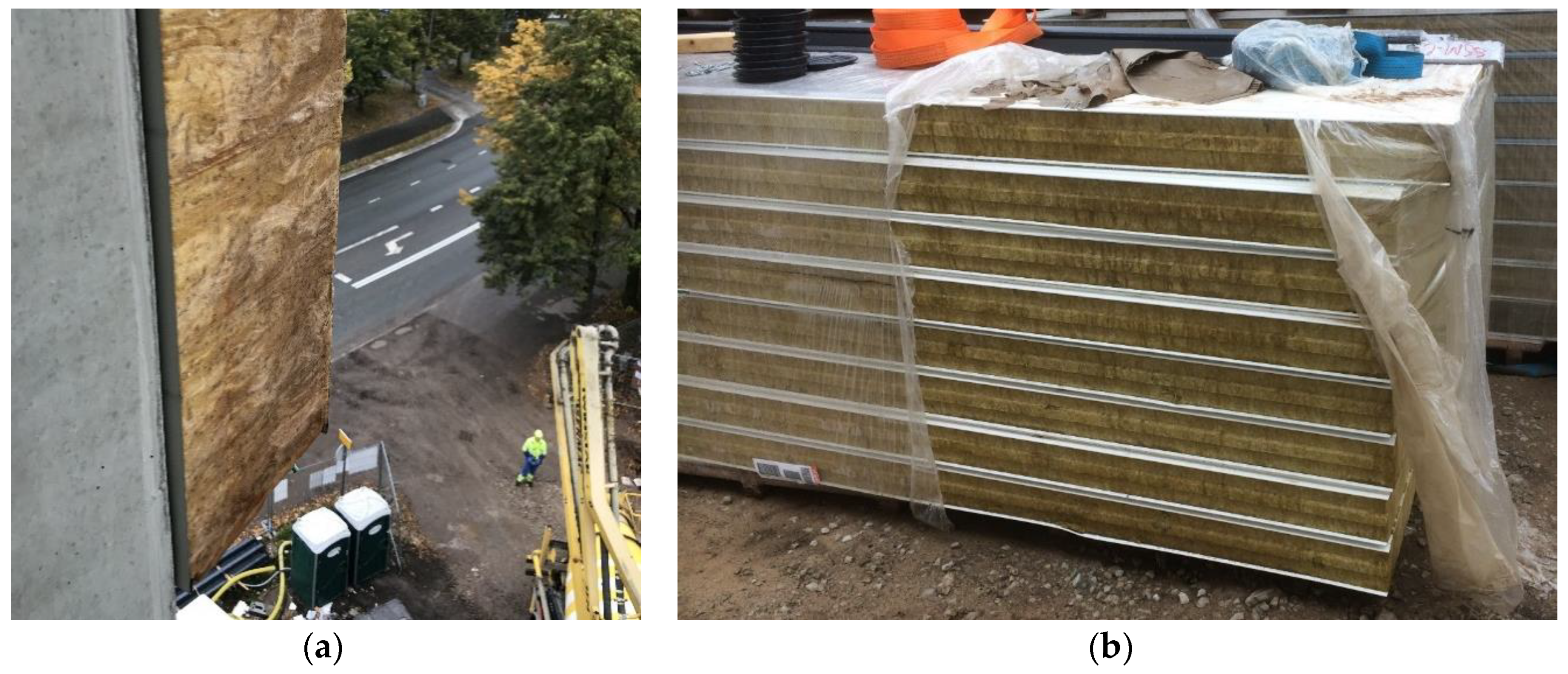

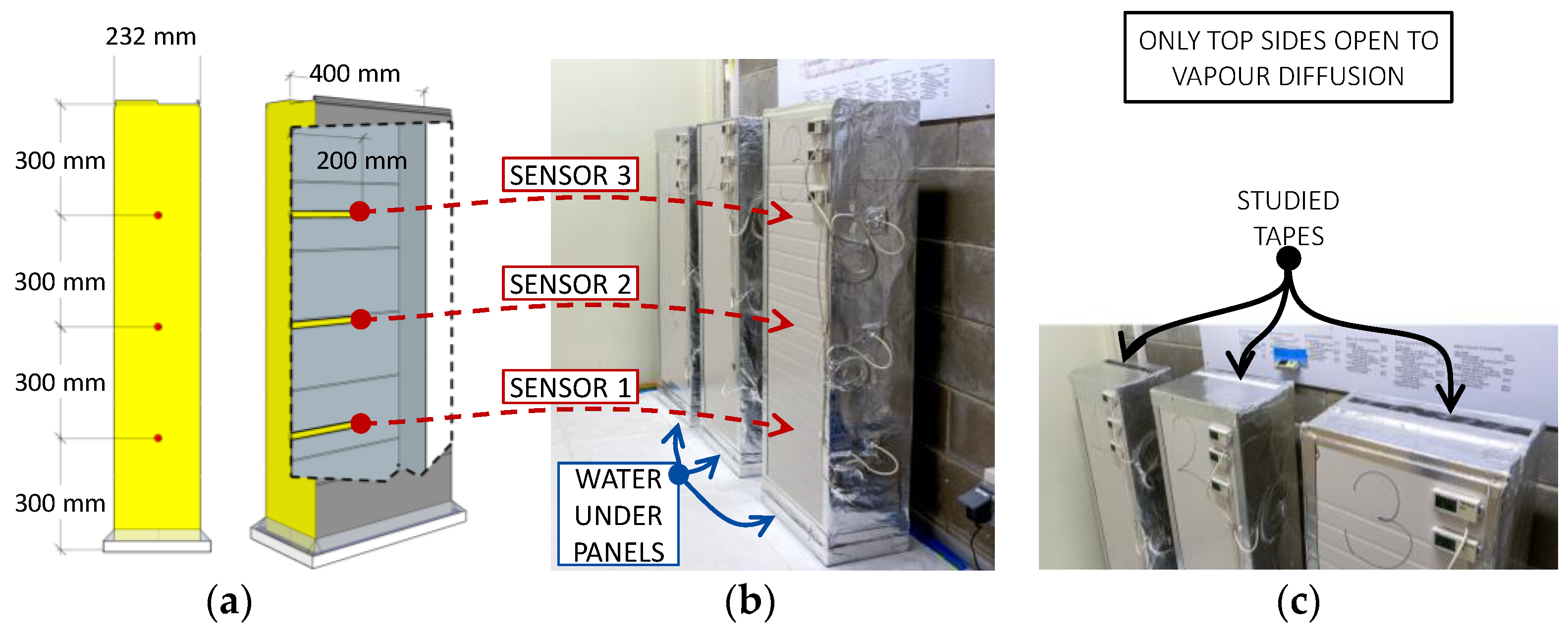
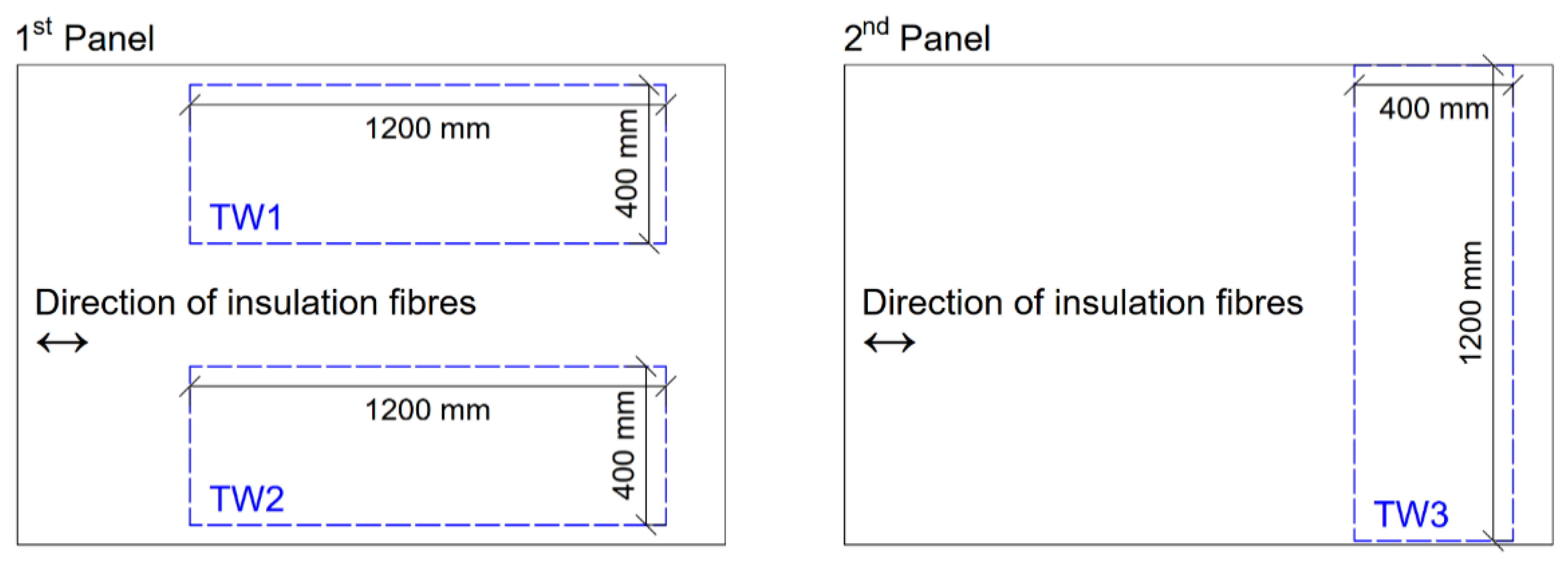
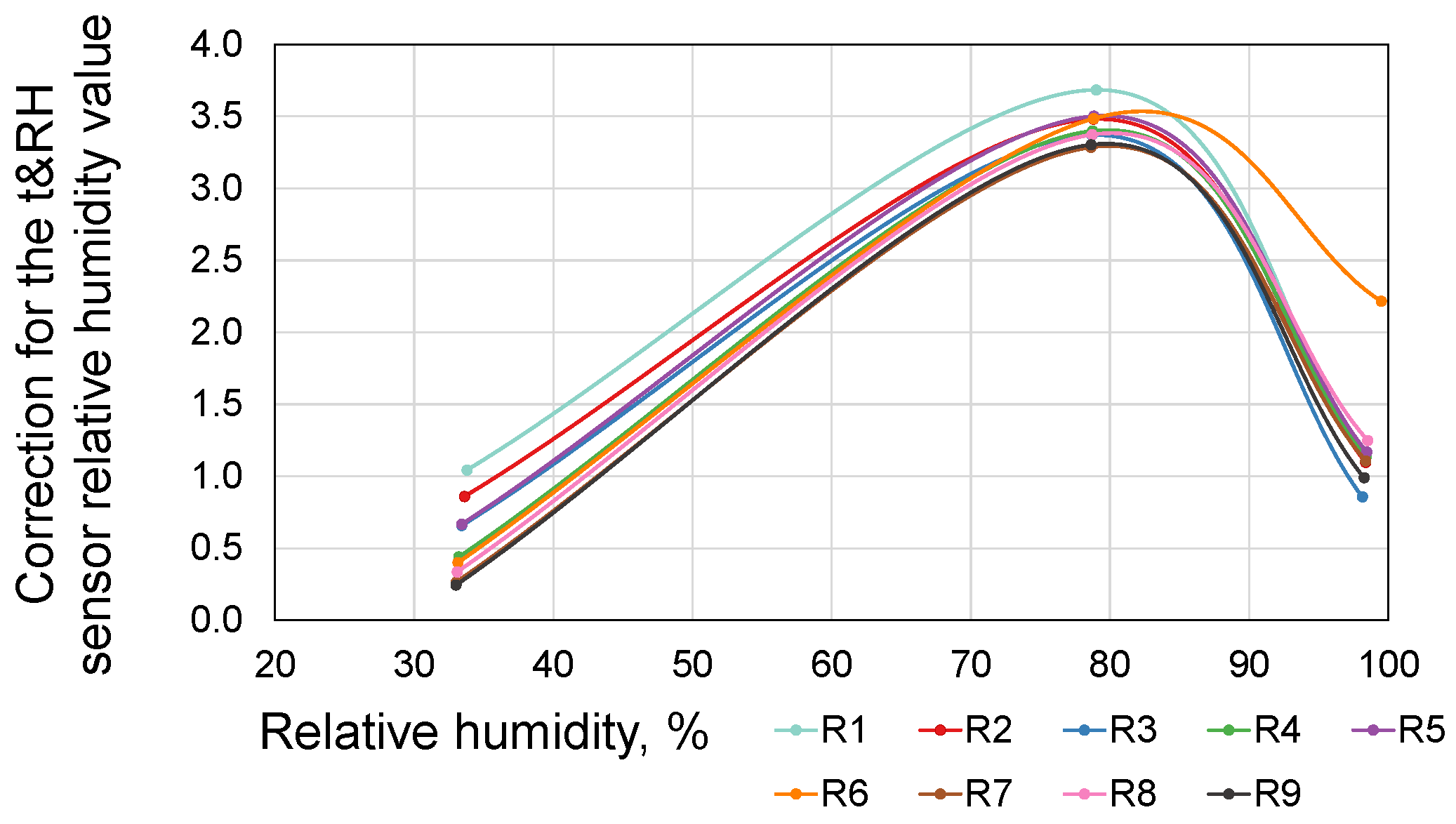
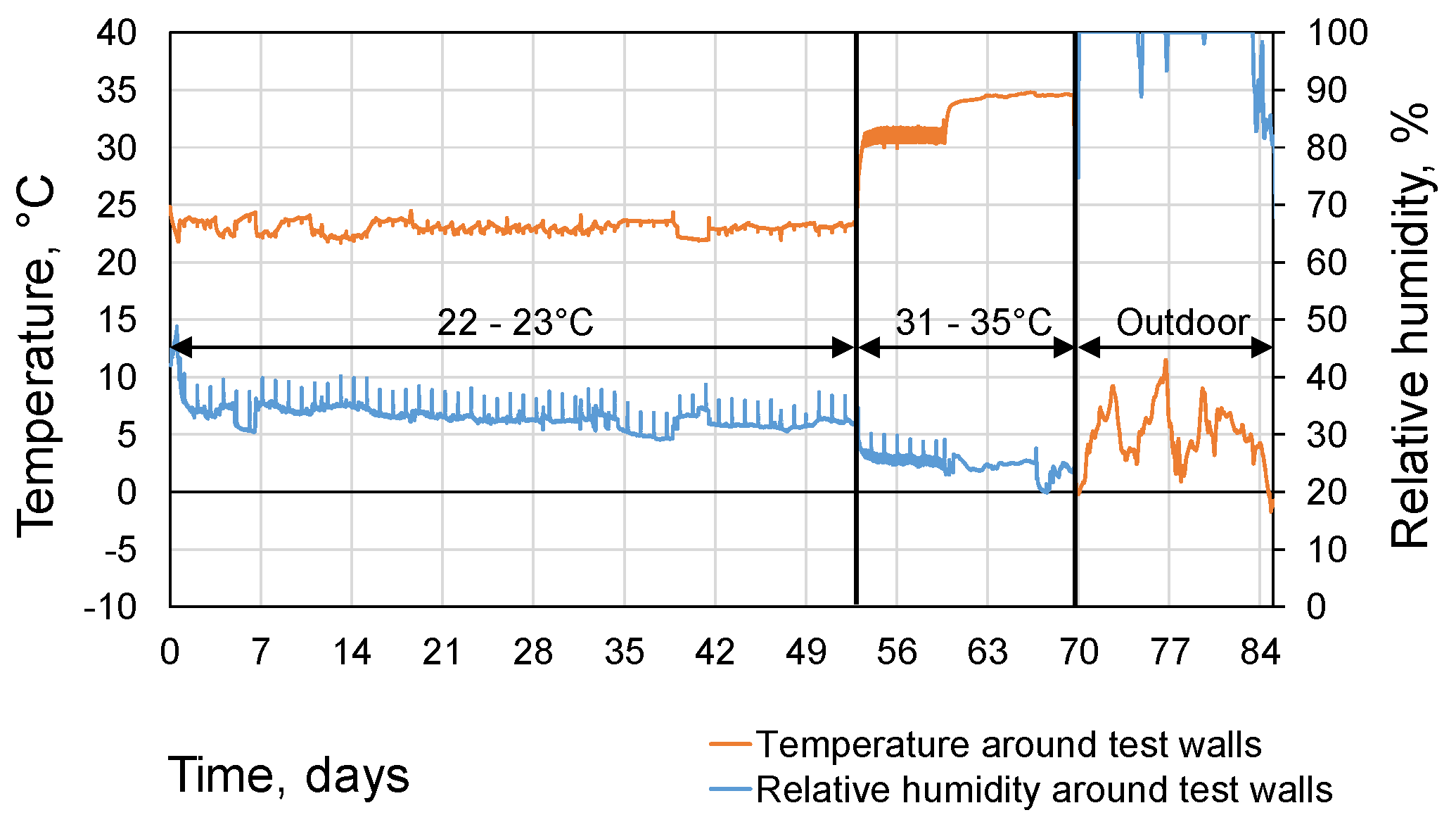

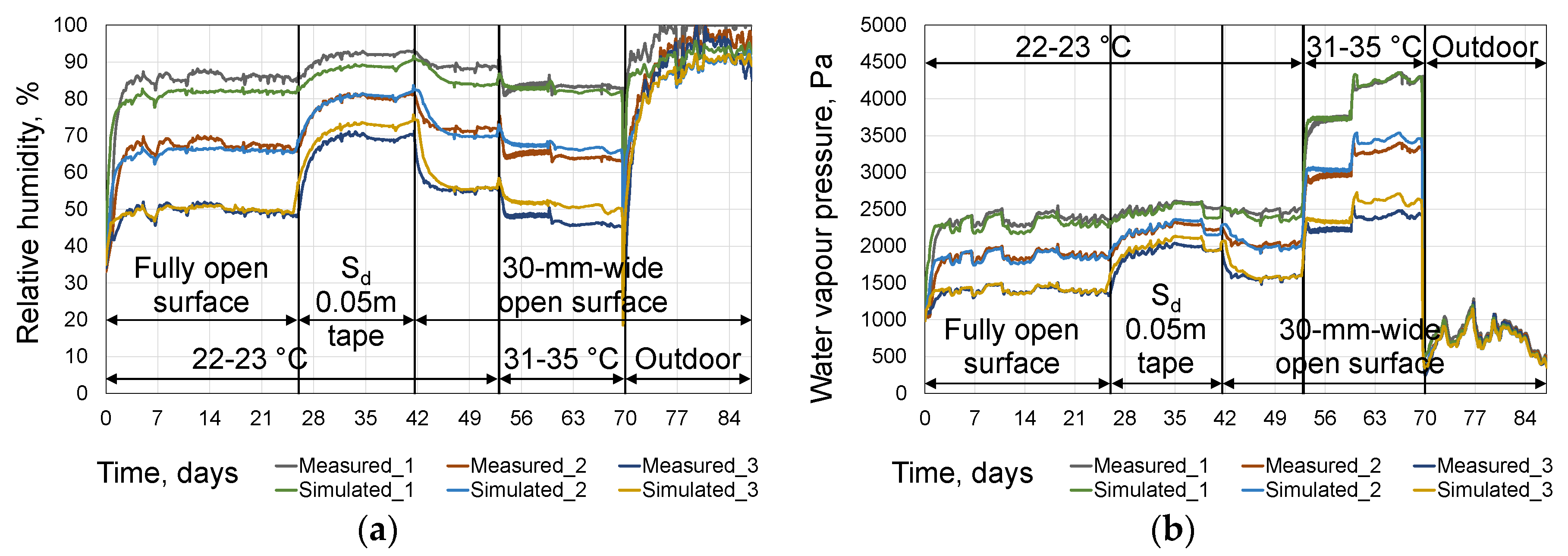
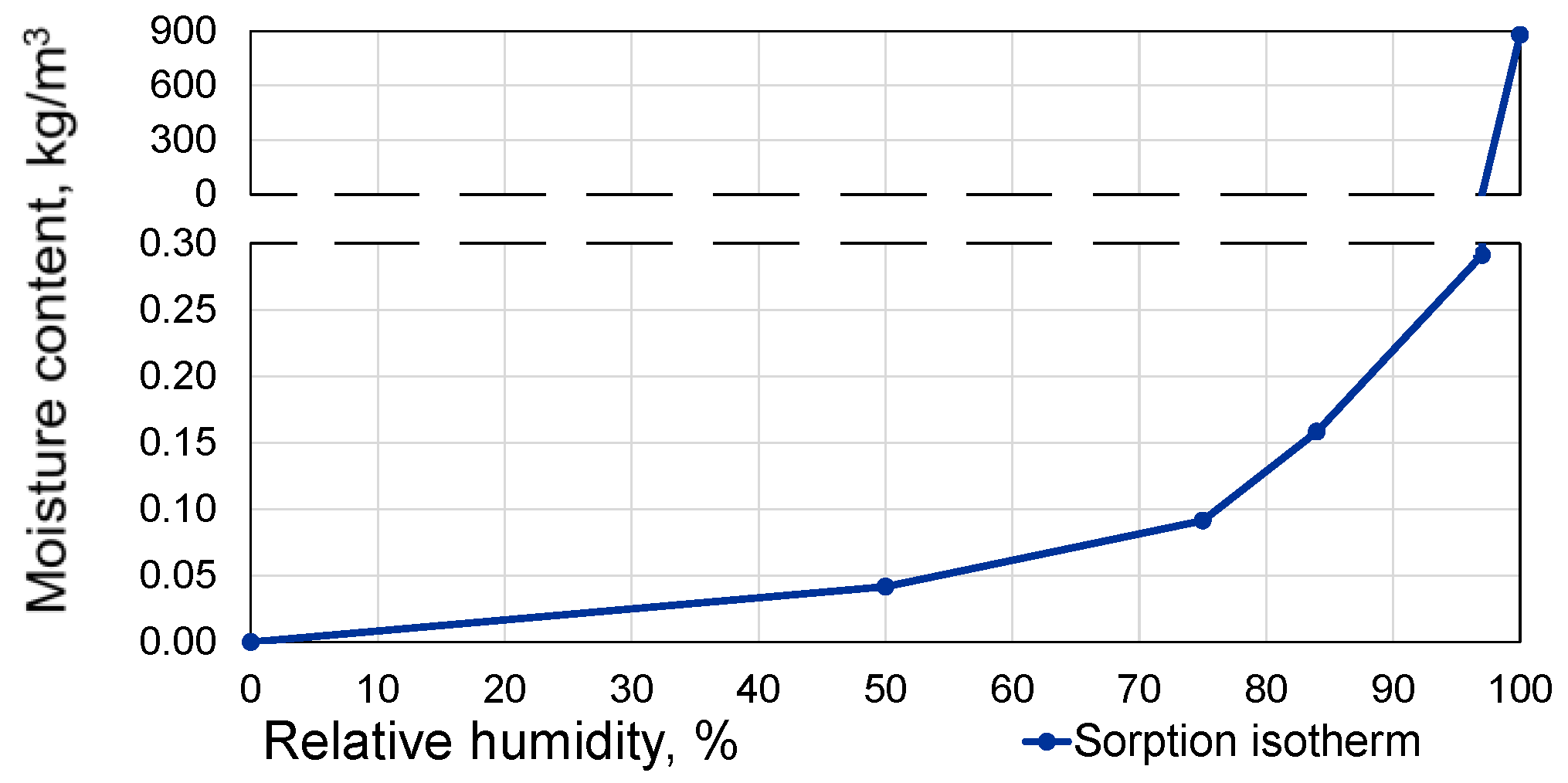

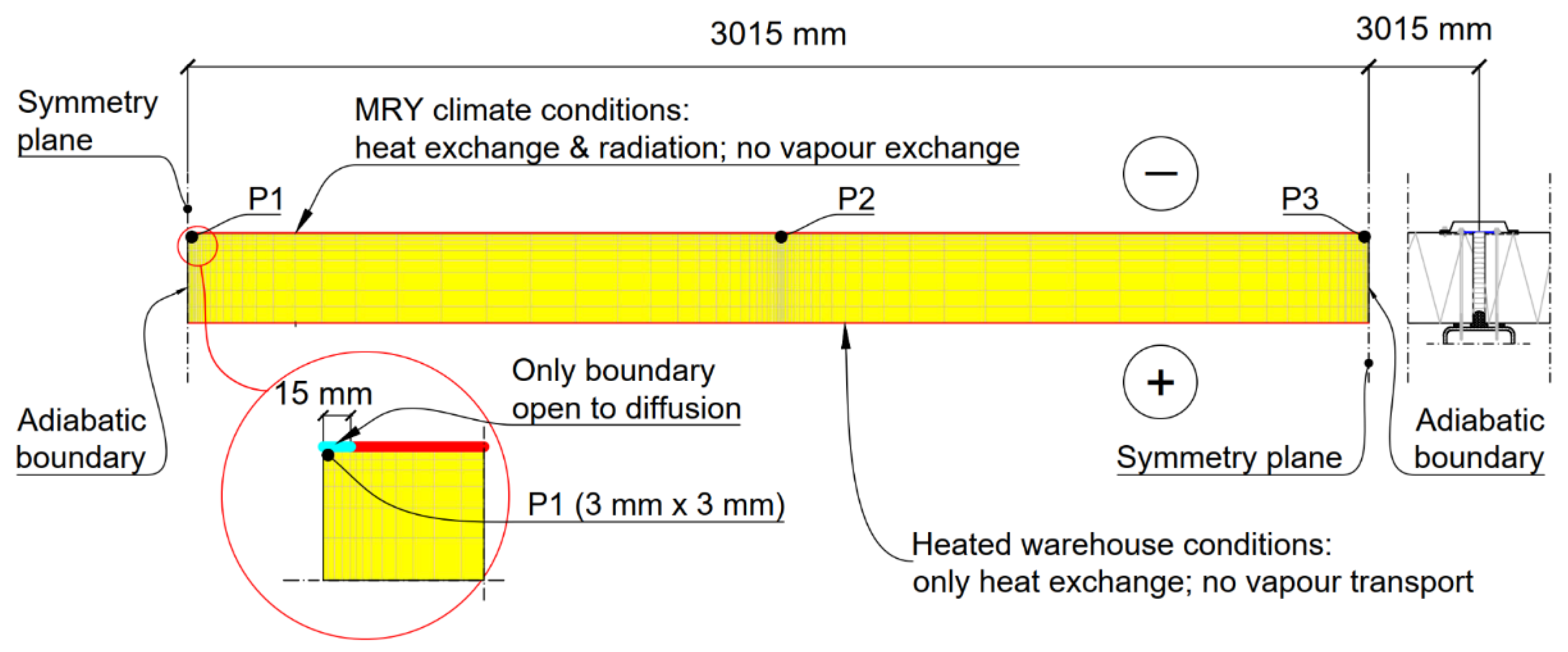
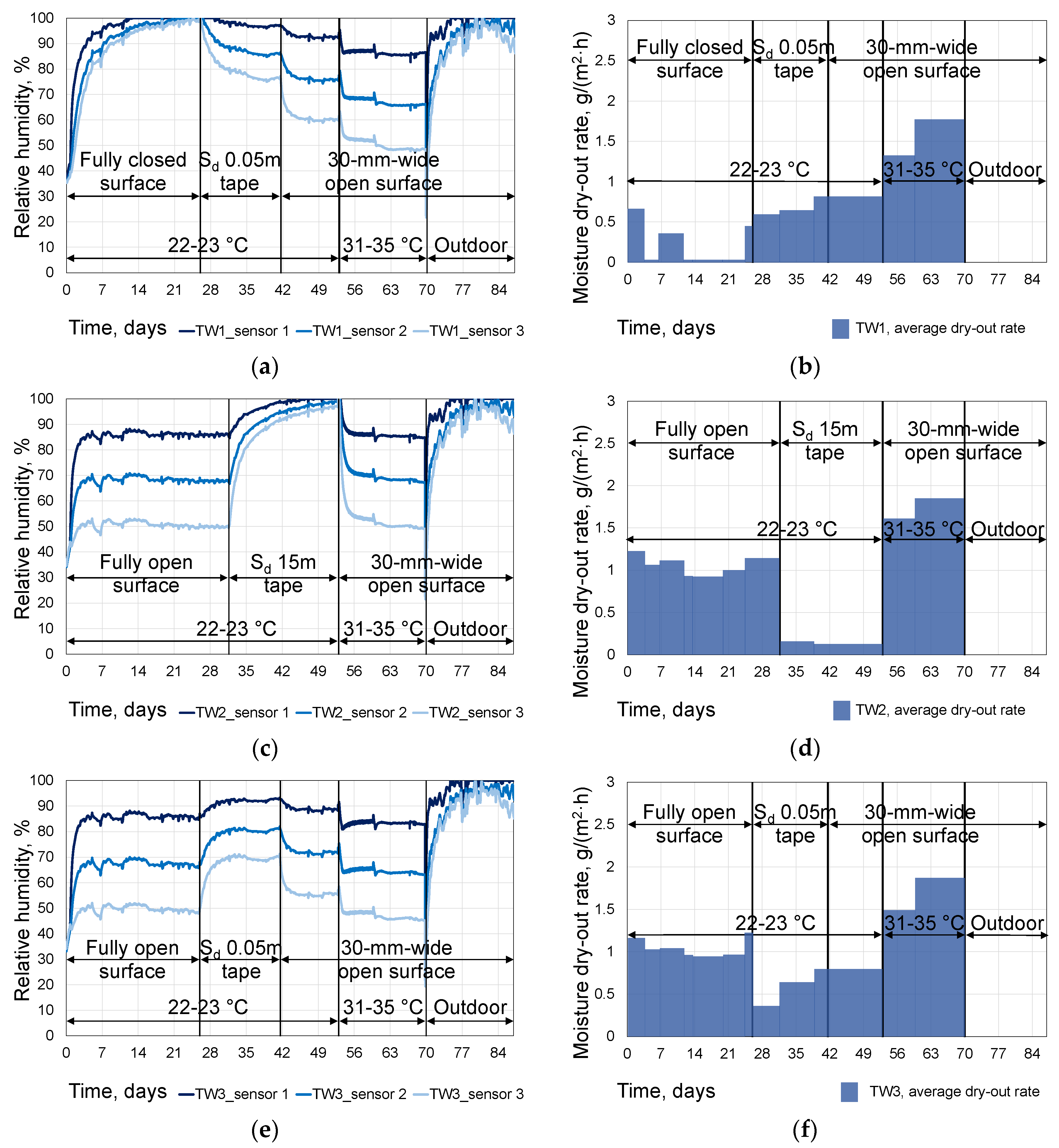
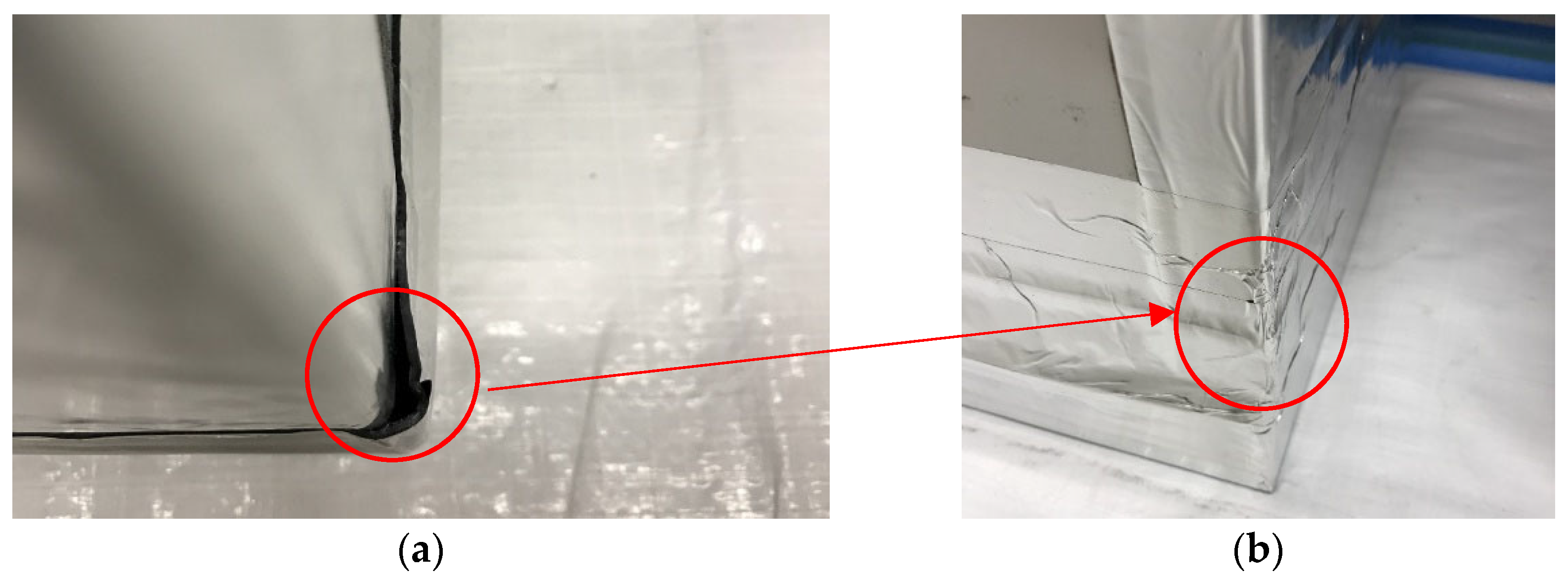
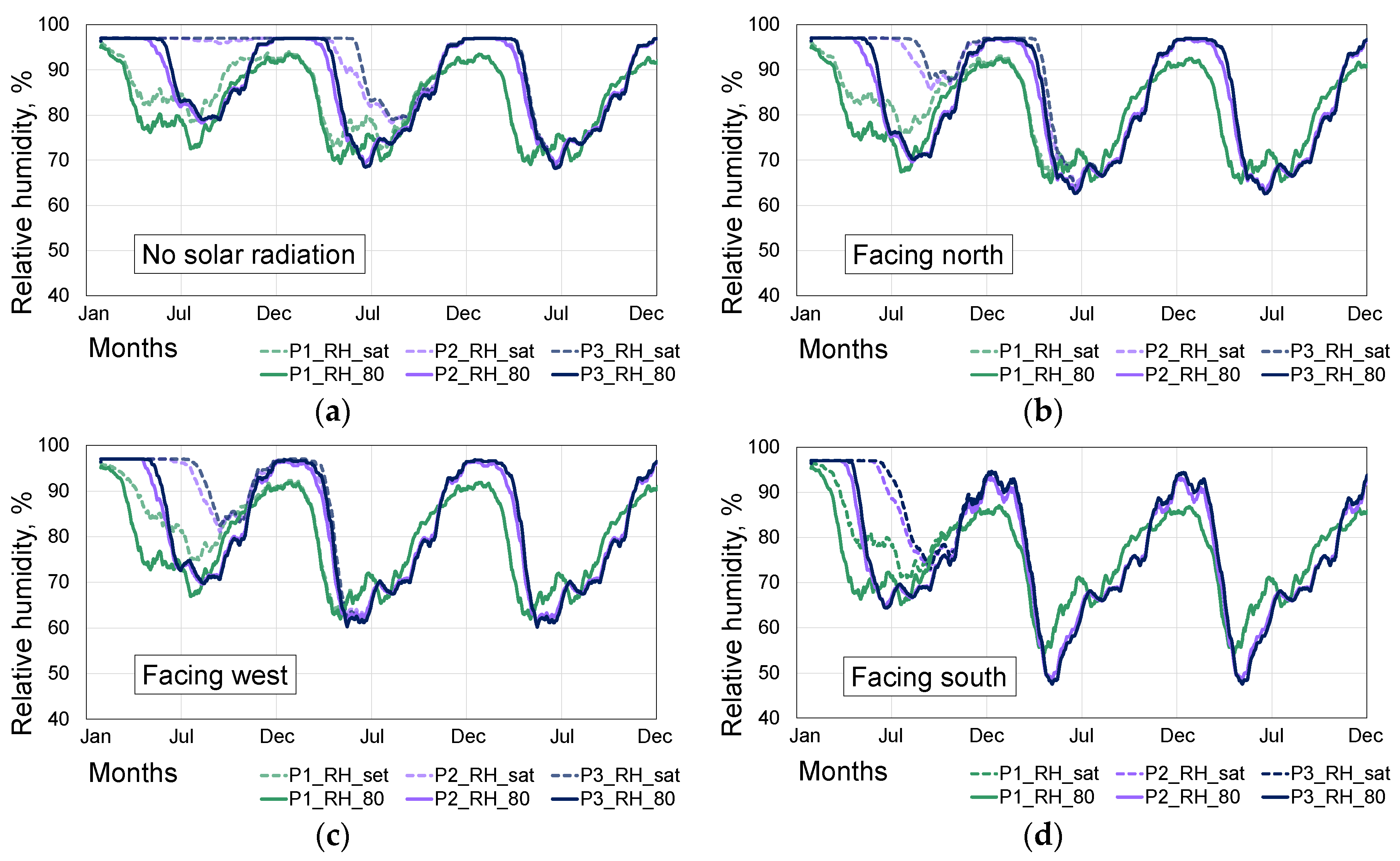


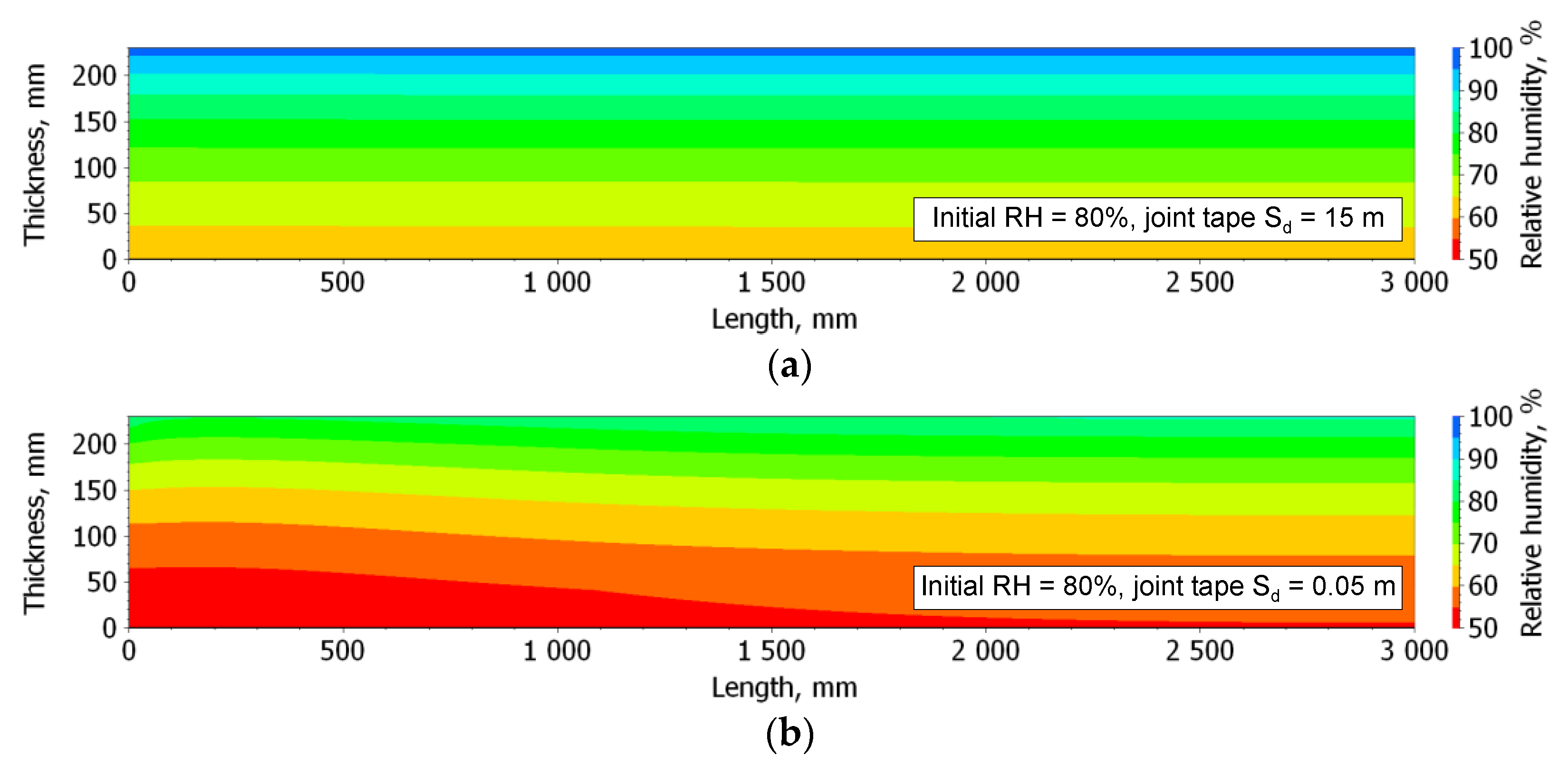

| Material Property | Value |
|---|---|
| Bulk density ρ, kg/m3 | 85 |
| Thermal conductivity λ, W/(m·K) | 0.04 |
| Specific heat capacity c, J/(kg·K) | 840 |
| Water vapour diffusion resistance factor μ, - | 1.0 |
| Effective saturation θ, m3/m3 | 0.9 |
| Porosity θ, m3/m3 | 0.97 |
| Water uptake coefficient Aw, kg/(m·s½) | 0 |
| Liquid water conductivity kl, kg/(m·s·Pa) | 0 |
| TOW, h/Year | TOW Level | Corrosivity Category for Steel * |
|---|---|---|
| 10 | T1 | C1 |
| 10 < TOW ≤ 250 | T2 | C1 |
| 250 < TOW ≤ 2500 | T3 | C2–3 |
| 2500 < TOW ≤ 5500 | T4 | C3 |
| 5500 < TOW | T5 | C3–4 |
Publisher’s Note: MDPI stays neutral with regard to jurisdictional claims in published maps and institutional affiliations. |
© 2020 by the authors. Licensee MDPI, Basel, Switzerland. This article is an open access article distributed under the terms and conditions of the Creative Commons Attribution (CC BY) license (http://creativecommons.org/licenses/by/4.0/).
Share and Cite
Kalbe, K.; Piikov, H.; Kalamees, T. Moisture Dry-Out Capability of Steel-Faced Mineral Wool Insulated Sandwich Panels. Sustainability 2020, 12, 9020. https://doi.org/10.3390/su12219020
Kalbe K, Piikov H, Kalamees T. Moisture Dry-Out Capability of Steel-Faced Mineral Wool Insulated Sandwich Panels. Sustainability. 2020; 12(21):9020. https://doi.org/10.3390/su12219020
Chicago/Turabian StyleKalbe, Kristo, Hubert Piikov, and Targo Kalamees. 2020. "Moisture Dry-Out Capability of Steel-Faced Mineral Wool Insulated Sandwich Panels" Sustainability 12, no. 21: 9020. https://doi.org/10.3390/su12219020
APA StyleKalbe, K., Piikov, H., & Kalamees, T. (2020). Moisture Dry-Out Capability of Steel-Faced Mineral Wool Insulated Sandwich Panels. Sustainability, 12(21), 9020. https://doi.org/10.3390/su12219020




